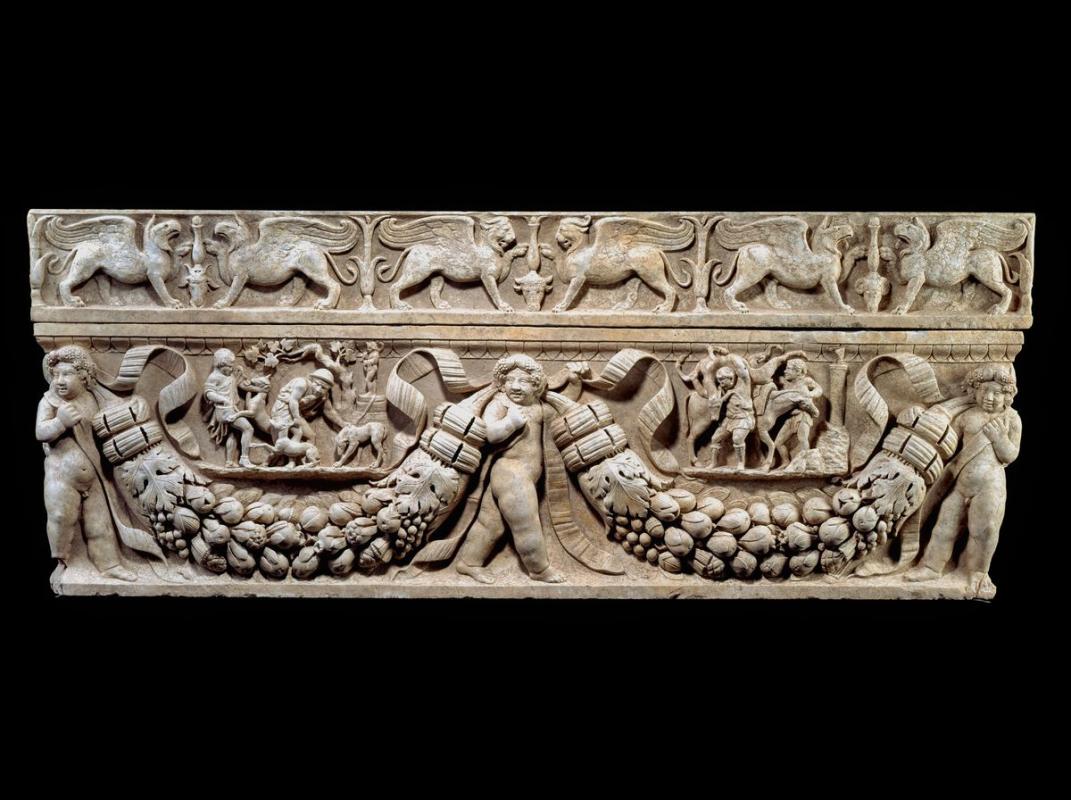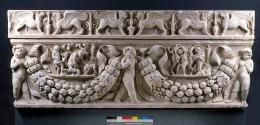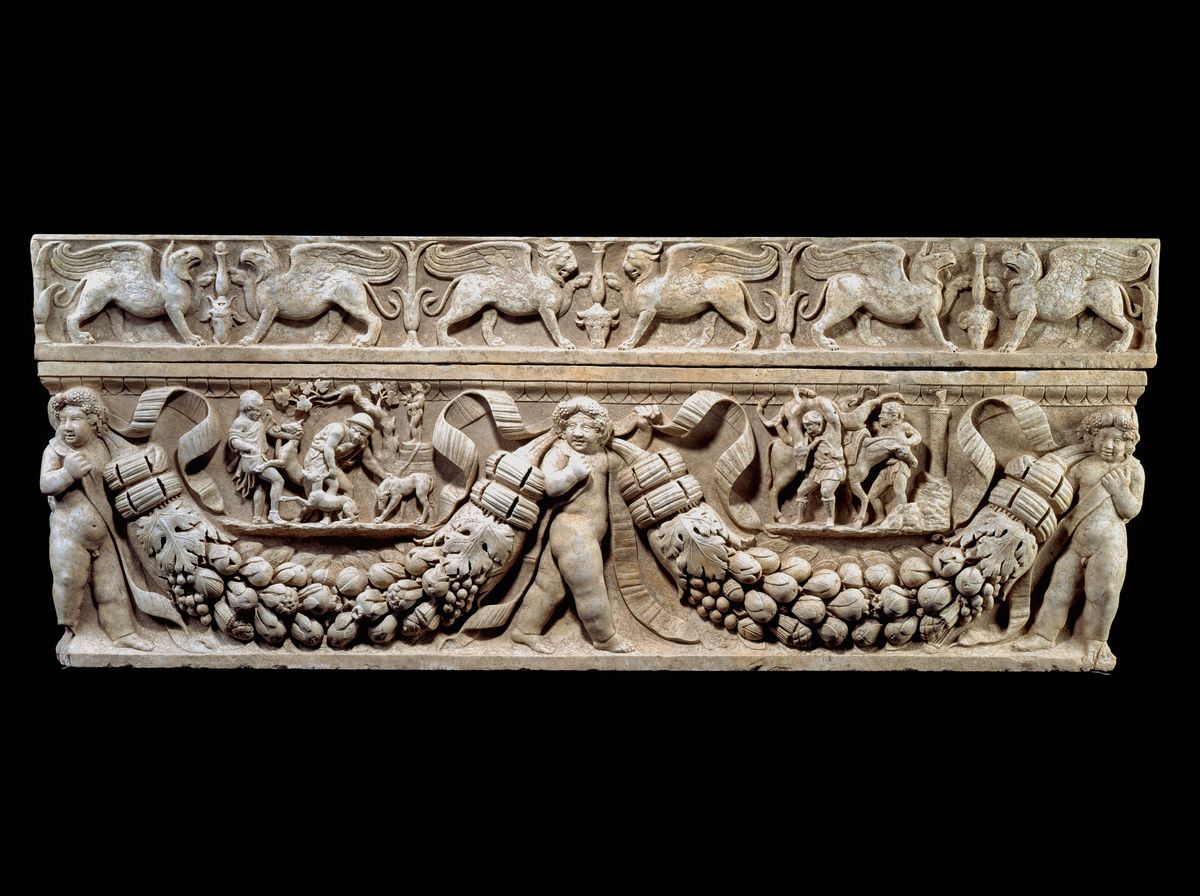Garland Sarcophagus with Hunting Scenes
Culture: Roman
Date: ca. 130-150
Medium: Marble
Dimensions:
chest: 20 1/4 × 76 5/8 × 29 1/2 in. (51.4 × 194.7 × 75 cm)
lid: 8 11/16 × 74 5/8 × 27 11/16 in. (22 × 189.5 × 70.3 cm)
overall h. with lid: 29 1/8 in. (74 cm)
Credit Line: Purchased with funds provided by Gilbert M. Denman, Jr.
Object number: 90.17.a-b
Provenance: with Artemis Fine Arts, London, by 1989; on loan at San Antonio Museum of Art from Robert Haber, Artemis Fine Arts, 1989-1990; sold by Robert Haber, New York/Artemis Fine Arts, London, to San Antonio Museum of Art, 1990
Published References
"Art Museum Makes Historic Purchase," San Antonio Express-News (18 Jan. 1990), 3B.
R. Burr, "SAMA Obtains Rare Roman Sculpture" San Antonio Light (18 Jan. 1990).
"State of the Art Funereal Request," San Antonio Express-News (23 Jan. 1990).
San Antonio Museum Association Development Bulletin (Spring/Summer 1990), 8.
San Antonio Museum of Art: The First Ten Years (San Antonio, 1990), 76.
M. L. Woodhull, "The 'Deer Hunters' Sarcophagus in the San Antonio Museum of Art: An Exploration of Carving Techniques and Style," M.A. thesis, University of Texas (Austin, 1993).
H. Herdejürgen, Stadtrömische und italische Girlandensarkophage, pt. 1, Die Sarkophage des ersten und zweiten Jahrhunderts. Die antiken Sarkophagreliefs, vol. 6.2 (Berlin, 1996), 95 n. 515, 115 n. 606.
J. Powers and J. Johnston, eds., San Antonio Museum of Art: Guide to the Collection, (San Antonio: San Antonio Museum of Art, 2012), 48.
J. Jäger, Die mythologischen Lünettenreliefs stadtrömischer Girlandensarkophage. Eine motivgeschichtliche Untersuchung (Würzburg, 2017), 115 n. 762.
B. Ferst, Stone Sarcophagi of the Roman Empire (2018), 139.
Label Text
On the front of this sarcophagus three Cupids hold garlands of fruit between them. Similar garlands of fruit, flowers, and leaves were a widely used motif on marble sarcophagi. Above the garlands are two hunting scenes: on the left, two hunters collect their dogs before an image of a woodland god; and on the right, they load the deer they have killed onto a donkey. The deep undercutting and crisp surfaces of the carving on the front of the chest have led some scholars to suspect that this side of the sarcophagus may have been recarved in the 20th century. (Jessica Powers 2008)
On view
The San Antonio Museum of Art is in the process of digitizing its permanent collection. This electronic record was created from historic documentation that does not necessarily reflect SAMA's complete or current knowledge about the object. Review and updating of such records is ongoing.











 This resource has been made possible in part by the National Endowment for the Humanities: Exploring the Human Endeavor.
This resource has been made possible in part by the National Endowment for the Humanities: Exploring the Human Endeavor.
